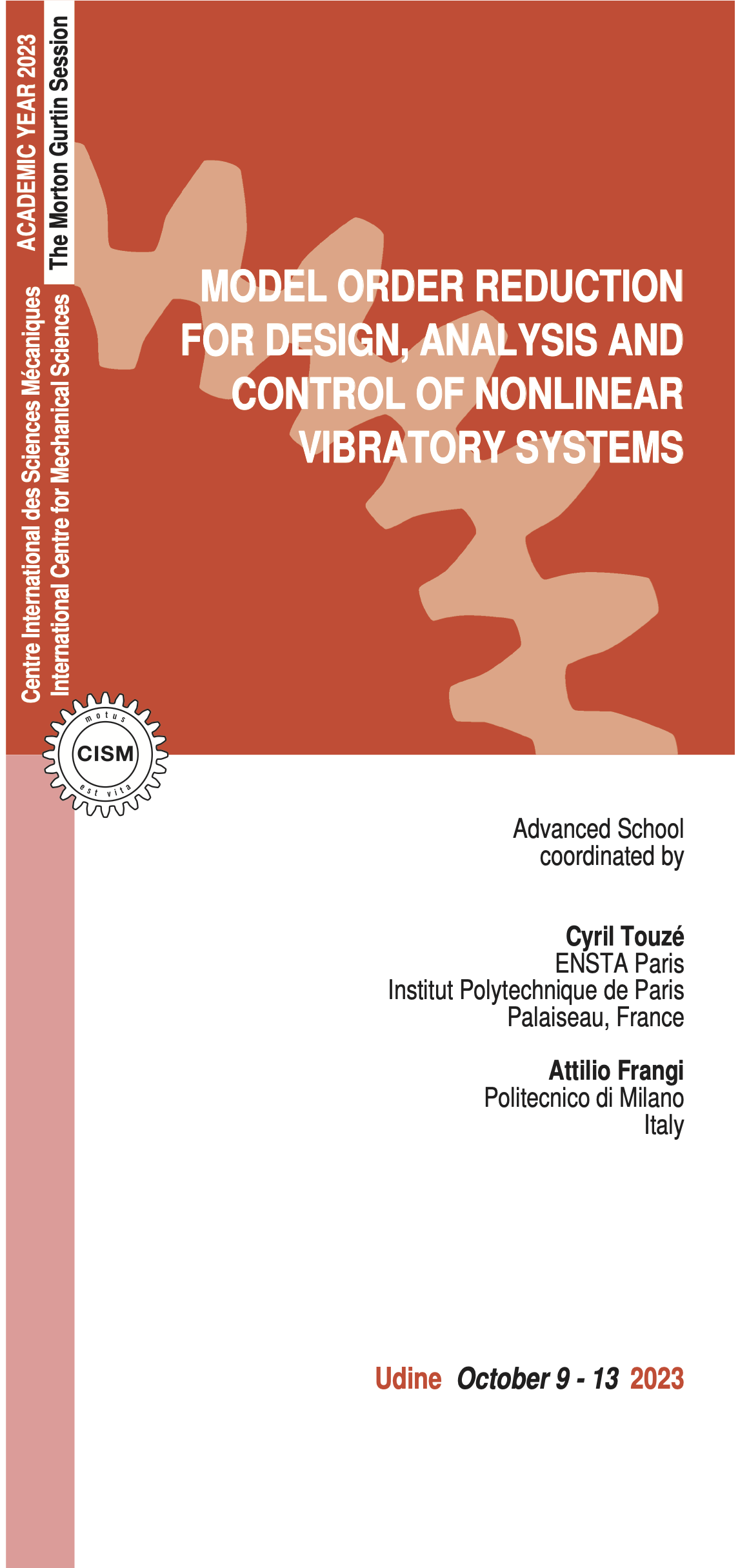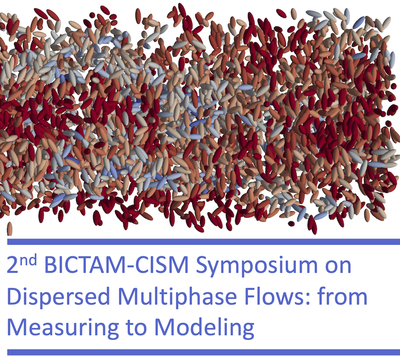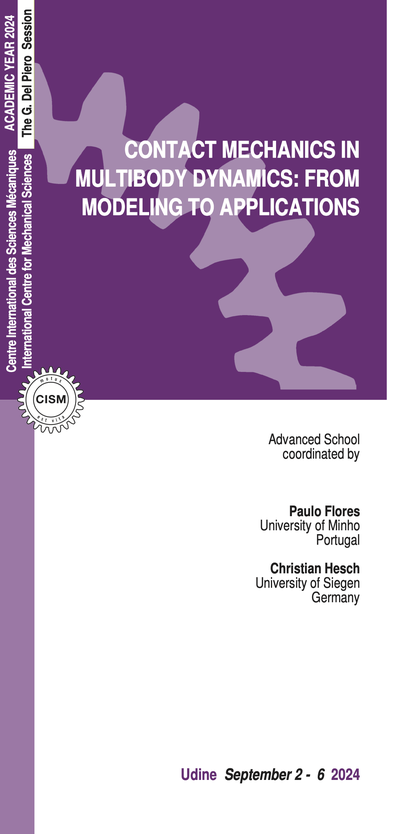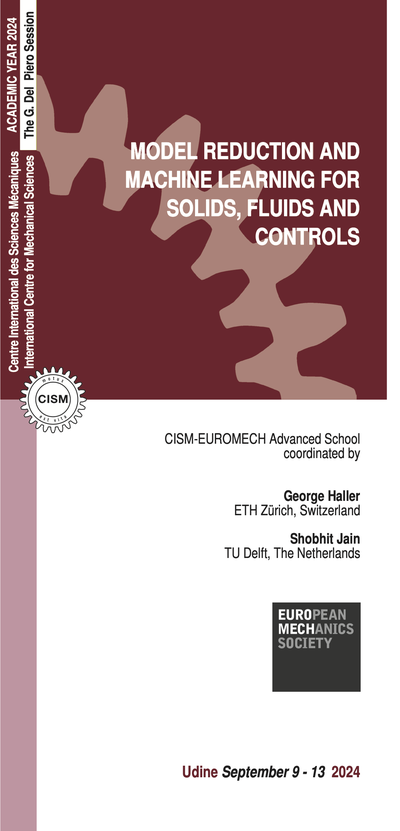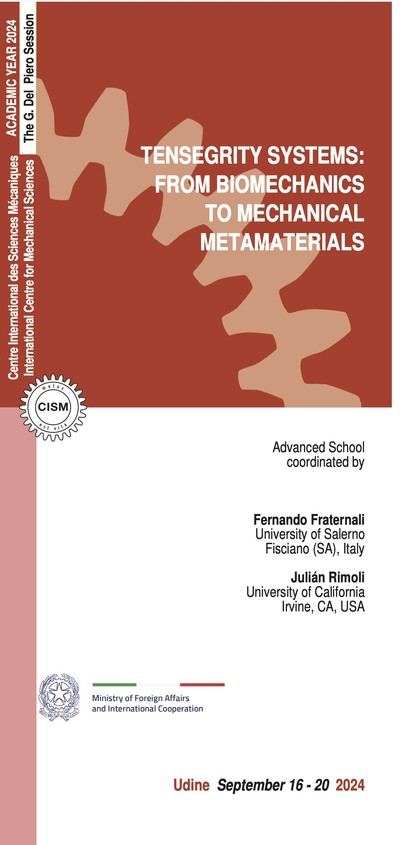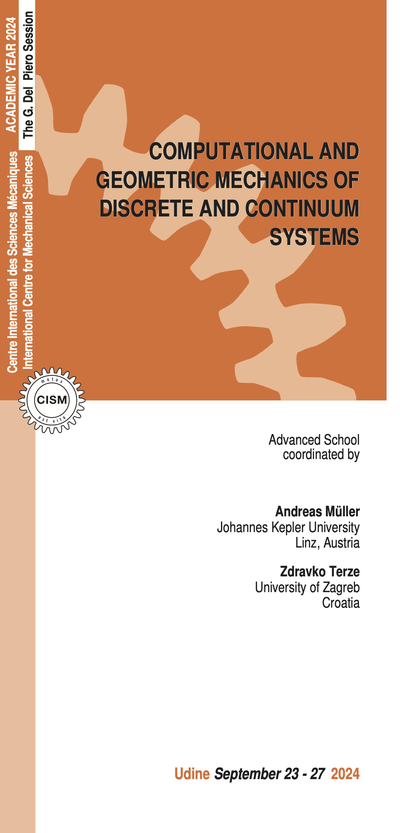This CISM course is devoted to the analysis of realistic engineering nonlinear vibratory systems with the tools provided by the dynamical systems theory. The cornerstone of the courses will be the use of model order reduction methods defined in the framework of the invariant manifold theory for nonlinear systems, which allows definitions of efficient methods generating the most parsimonious nonlinear models having minimal dimension, and reproducing the dynamics of the full system under generic assumptions. Emphasis will be put on the development of direct computational methods for finite element (FE) structures, allowing one to go from the physical coordinates to an invariant-based span of the system. Reduction methods have witnessed major improvements in the recent years. In particular, direct calculations of reduced dynamics for large FE structures using invariant manifold theory, allow one to reduce a problem from millions of dofs to the few essential ones. Besides, the reduced models are known to be minimal, representative, and convergent thanks to arbitrary order expansion. Open source codes are available for geometric nonlinearity and the course will introduce them.
Once the reduced order model obtained, numerical and analytical methods will be detailed in order to get a complete picture of the dynamical solutions of the system in terms of stability and bifurcation. The numerical continuation methods will be specifically addressed to obtain fast and accurate solutions of reduced dynamics. Applications from the MEMS industry (Micro Electro Mechanical Systems) and from the aerospace industry (vibrations of blades, bolted structures, vibration mitigation), will be covered and analyzed, in the light of proposing fast computations for more efficient designs and control of nonlinear vibrations of engineering structures. Geometric nonlinearity, friction nonlinearity in contact and jointed structures, detection and use of internal resonance, piezoelectric coupling and passive control, parametric driving will be surveyed as key applications. The course will also address the links with experiments, and the connection between invariant manifold theory and methods obtained with data-driven techniques will be illustrated, opening the door to efficient use of digital twins in nonlinear analysis of engineering structures.
The course is structured along three main didactic themes: (i) Reduction methods - Basic notions about reduced order models for nonlinear systems, emphasis on nonlinear normal modes and the parametrisation method for invariant manifold, direct computational methods for FE structures; (ii) Numerical tools for analysis and design – continuation methods, stability and bifurcation, control; and, (iii) Applications – practical and industrial problems where reduction methods combined with analysis are used at the design stage or for controlling nonlinear systems, applications in MEMS and aerospace industry. The course is addressed to doctoral students and postdoctoral researchers in nonlinear vibrations, mechanics, applied physics and applied mathematics, academic and industrial researchers and practicing engineers.
Haro, A., Canadell, M., Figueras, J.L., Luque, A., Mondelo, J.M.: The Parameterization Method for Invariant Manifolds. From Rigorous Results to Effective Computations. Springer (2016).
C. Touzé, A. Vizzaccaro and O. Thomas: Model order reduction methods for geometrically nonlinear structures: a review of nonlinear techniques, Nonlinear Dynamics, 105, 1141-1190, 2021.
A. Vizzaccaro, A. Opreni, L Salles, A. Frangi and C. Touzé: High order direct parametrisation of invariant manifolds for model order reduction of finite element structures: application to large amplitude vibrations and uncovering of a folding point, Nonlinear Dynamics, 110, 525-571, 2022.
Jain, S., Haller, G.: How to compute invariant manifolds and their reduced dynamics in high-dimensional finiteelement models? Nonlinear Dyn. 107, 1417–1450, 2022.
Krack, M.; Gross, J.: Harmonic Balance for Nonlinear Vibration Problems, 159pp, (2019), Springer, ISBN: 978-3-030- 14022-9. Monjaraz-Tec, C. D.; Gross, J.; Krack, M.: A massless boundary component mode synthesis method for elastodynamic contact problems. Computers and Structures, 2022.
L. Guillot, A. Lazarus, O. Thomas, C. Vergez, B. Cochelin : A purely frequency based Floquet-Hill formulation for the efficient stability computation of periodic solutions of ordinary differential system. Journal of Computational Physics 416 (2020) 109477.
A. Givois, J.-F. Deü, O. Thomas: Dynamics of piezoelectric structures with geometric nonlinearities: A non-intrusive reduced order modelling strategy. Computers and Structures, 253 (2021) 106575.
Wagg, D. J., Keith Worden, R. J. Barthorpe, and Paul Gardner: Digital twins: state-of-the-art and future directions for modeling and simulation in engineering dynamics applications. ASCE-ASME Journal of Risk and Uncertainty in Engineering Systems Part B Mechanical Engineering 6, no. 3 (2020).S Fresca, G Gobat, P Fedeli, A Frangi, A Manzoni, Deep learning-based reduced order models for the real-time simulation of the nonlinear dynamics of microstructures, Int. J. Numer. Meth. Engng, 2022, DOI: 10.1002/nme.7054.
G. Formica, W. Lacarbonara (2020) Asymptotic dynamic modeling and response of hysteretic nanostructured beams, Nonlin Dyn 99:227--248.
D. De Domenico, G. Quaranta, G. Ricciardi, W. Lacarbonara (2022) Optimum design of tuned mass damper with pinched hysteresis under nonstationary stochastic seismic ground motion, Mech Sys Sign Proc 170, 108745.
6 lectures on: the use of reduced-order models for the design and control of MEMS. Finite elements for nonlinear (geometrically and electromechanical) vibratory systems. Nonlinear dynamics of MEMS, reduction and analysis, applications and case studies. Reduction methods from data with machine learning and neural networks, and link with invariant manifold theory.
5 lectures on: nonlinear modes, friction nonlinearity and applications. Damped nonlinear modes via harmonic balance and continuation, experimental analysis, model order reduction, application to bladed disks. Analysis of structures subjected to friction and impacts, non-smooth contact laws, massless boundary component mode synthesis. Substructuring of geometrically nonlinear jointed structures.
6 lectures on: reduction methods for engineering structures, applications in control and design. Reduced order models for passive control of nonlinear vibrations including hysteretic phenomena. Applications in aeroelasticity and engineering structures. Stability, bifurcation and buckling.
Replaced by Mathias Legrand
6 lectures on: unilateral contact and friction conditions in mechanics. Formulation in statics and dynamics. Application to a bar system with derivation of various solution strategies including Lagrange multipliers, Nitsche's method, regularization and penalization methods, Newton's impact law. Extension to nonlinear and nonsmooth modal analysis of unilaterally constrained structures.
6 lectures on: analytical and finite element models for geometrically and piezoelectric nonlinear structures; numerical continuation methods, stability and bifurcations; experimental continuation and identification of nonlinear systems; applications in nonlinear dynamics of MEMS, parametric driving and amplification and piezoelectric passive control of structures.
6 lectures on: reduced-order modeling using the direct parametrisation of invariant manifolds. Invariant manifolds and nonlinear normal modes in vibration theory. Direct parametrisation method for model order reduction of finite element structures with geometric nonlinearity. Autonomous and non-autonomous systems. Resonances, nonlinear mappings and reduced dynamics.
6 lectures on: nonlinear control of mechanical systems using reduced-order models and engineering applications. Nonlinear control of reduced and low-order systems. Passive, active and semi-active control methods. Nonlinear reduced-order models for digital twins.
ADMISSION AND ACCOMMODATION
The course is offered in a hybrid format giving the possibility to attend the course also by remote (on Microsoft Teams platform). On-site places are limited and assigned on first come first served basis.
The registration fees are:
On-site participation, 600.00 Euro + VAT*
This fee includes a complimentary bag, five fixed menu buffet lunches, hot beverages, downloadable lecture notes.
Deadline for on-site application is September 9, 2023.
Online participation, 250.00 Euro + VAT*
This fee includes downloadable lecture notes.
Deadline for online application is September 27, 2023.
Application forms should be sent on-line through the following web site: http://www.cism.it
A message of confirmation will be sent to accepted participants.
Upon request a limited number of on-site participants can be accommodated at CISM Guest House at the price of 35 Euro per person/night (mail to: foresteria@cism.it).
* where applicable (bank charges are not included) Italian VAT is 22%.
CANCELLATION POLICY
Applicants may cancel their registration and receive a full refund by notifying CISM Secretariat in writing (by email) no later than:
- September 9, 2023 for on-site participants (no refund after the deadline);
- September 2, 2023 for online participants (no refund after the deadline).
Cancellation requests received before these deadlines will be charged a 50.00 Euro handling fee. Incorrect payments are subject to Euro 50,00 handling fee.
GRANTS
A limited number of participants from universities and research centres who are not supported by their own institutions can request the waiver of the registration fee and/or free lodging.
Requests should be sent to CISM Secretariat by August 9, 2023 along with the applicant's curriculum and a letter of recommendation by the head of the department or a supervisor confirming that the institute cannot provide funding. Preference will be given to applicants from countries that sponsor CISM.
